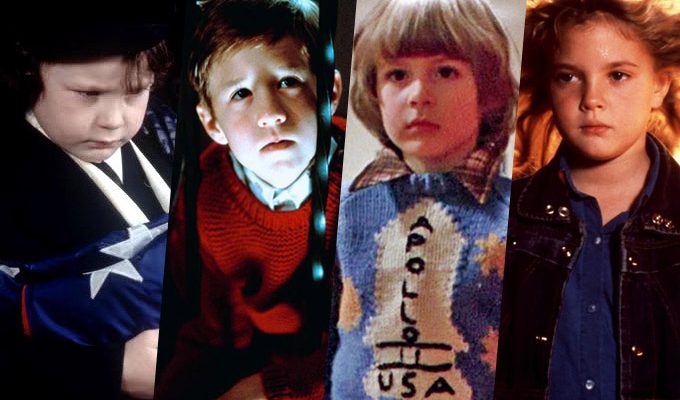 “The Shining” (1980)
“The Shining” (1980)
Famously, Stephen King doesn’t like Stanley Kubrick’s film of his book “The Shining,” preferring instead a three-part miniseries version that he scripted that starred Steven Weber and Rebecca De Mornay. Stephen King is right on many things, but he is utterly wrong about Stanley Kubrick’s film of “The Shining,” because it’s one of the greatest horror movies ever made, and probably the best film on this list. Though the images we think of when we remember the film probably involve Jack Nicholson axing his way through the door, the film’s title refers to the special telepathic power possessed by young Danny Torrance (Danny Lloyd), whose parents are looking after a snowy hotel in Colorado for the winter. From early on, Danny has horrifying visions or premonitions before they even get there, the source of some of the film’s most notable imagery, and things only get worse as the film goes on. King often risked over-mythologizing the titular shining (not least in the difficult-to-comprehend belated sequel “Doctor Sleep“) but Kubrick keeps things just on the right side of ambiguity, with Lloyd (who gave up acting and is now a community college professor) proving to be a powerful conduit for it, not least when he terrifyingly brings imaginary friend ‘Tony’ to life.
Are little Miles and Flora (Martin Stephens and Pamela Franklin) actually pursuing a grotesque incestuous affair because they’re possessed by the evil souls of two deceased servants, or is it all in the repressed and increasingly hysterical mind of their governess Miss Giddens (a brilliant Deborah Kerr)? Jack Clayton‘s classic psychological horror, based on Henry James‘ “The Turn of the Screw” achieves such a brilliant balance and maintains it with such chillingly evocative filmmaking that it’s impossible to say if these two children even belong on this list. One way or another though, whether because they are actually communing with the dead or because the disintegrating mind of Miss Giddens has conjured them into demons, Miles and Flora are among the creepiest children cinema has ever brought us, especially since the most unnatural thing about them is actually the most natural — their bond as siblings. With a screenplay co-written by Truman Capote, who reportedly added many of the film’s Southern Gothic flourishes, like the decaying vegetation of the mansion’s overgrown garden, as well as its brilliantly suffocating Freudian overtones, it’s little less than a masterpiece of twisted necro-paedo-hysterio horror, and reportedly prompted Francois Truffaut to dub it “the best English film after Hitchcock goes to America.”
 “Firestarter” (1984)
“Firestarter” (1984)
As you might expect for someone who writes at the volume that he does in the genres that he does, Stephen King went to the kids-with-powers well more than once. “Firestarter” is done much less successfully than the other example (see below), but it’s an interesting little curio that fans of the writer will probably have a good time with. Based on his 1980s novel, the film sees father and daughter Andy (David Keith) and Charlie (a post “E.T.” Drew Barrymore) on the run from the government agency that gave them their special powers — he can control people’s wills, she can, as the title might suggest, start fires. As with many King adaptations, it’s a story that feels more familiar once the texture and oddities have been removed in translation, but it’s moderately absorbing as a story, thanks in part to the effortless performance by Barrymore. She’s backed up by a terrific supporting cast, with George C. Scott and Martin Sheen doing fine work as the villains, and Art Carney and Louise Fletcher as more sympathetic figures, but they’re in a different, rather classier film than the one B-movie helmer Mark L. Lester is directing. Still, the push-pull between shlock and something more interesting is sort of interesting to watch.

